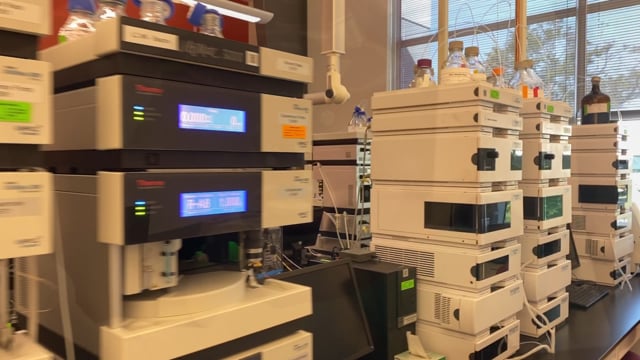Innovations in Delivery Systems for Enhanced Absorption of Topical Pharmaceuticals
In today’s pharmaceutical industry, delivering medications through the skin has become increasingly popular due to its convenience and effectiveness. Topical pharmaceuticals, also known as transdermal drugs, offer a non-invasive way to administer medication directly to the affected area of the body. However, one challenge that researchers and manufacturers face is ensuring that the medication is absorbed efficiently by the skin.
This is where innovations in delivery systems come into play. Companies like Dow Development Labs are constantly researching and developing new methods to enhance the absorption of topical pharmaceuticals. Let’s take a closer look at some of these innovations and how they can benefit pharmaceutical companies and their products.
Transdermal Patches
One of the most commonly used delivery systems for topical pharmaceuticals is transdermal patches. These patches are designed to adhere to the skin and release medication over a specific period of time. They offer a convenient way for patients to receive continuous doses of medication without having to remember to take pills or injections.
But what makes transdermal patches so effective? The key lies in their unique composition. The patches are made up of several layers including an adhesive layer, drug reservoir layer, rate-controlling membrane, and protective backing layer. This layered design allows for controlled release of medication at a consistent rate, ensuring maximum absorption through the skin.
Nanotechnology
Nanotechnology has revolutionized many industries, including pharmaceuticals. In terms of topical drugs, nanotechnology has allowed for better penetration into the skin’s layers. Nanoparticles can be loaded with medications and designed specifically to target certain areas within the skin.
By using nanotechnology in topical drug delivery systems, companies like Dow Development Labs can provide more targeted treatments with fewer side effects. Additionally, nanoparticles have shown promise in delivering larger molecules such as proteins and peptides, which were previously difficult to deliver through the skin.
Microneedle Technology
Another innovative delivery system for topical pharmaceuticals is microneedle technology. These tiny needles, typically less than a millimeter in length, create microchannels in the skin that allow for better absorption of medication. This method has been shown to be more effective than traditional topical application, as it bypasses the skin’s protective barrier and delivers medication directly into the dermis.
Microneedles can be made from various materials such as metals, polymers, or even sugars. They can also be designed to dissolve after use or to remain in the skin for continuous delivery of medication over a longer period of time. This flexibility allows for customization based on the specific needs of a drug and its intended use.
Hyaluronic Acid Gels
Hyaluronic acid is a naturally occurring substance in the body that helps keep our skin hydrated and supple. In recent years, it has been used in topical drug delivery systems due to its ability to enhance penetration into the skin’s layers. Hyaluronic acid gels act as carriers for medications, allowing them to penetrate deeper into the skin and increasing their absorption rate.
By incorporating hyaluronic acid gels into topical pharmaceuticals, companies like Dow Development Labs can provide more effective treatments with reduced irritation or adverse reactions on the skin. Additionally, hyaluronic acid has been found to have anti-inflammatory properties, making it an ideal choice for drugs targeting inflammatory conditions like psoriasis or eczema.
Benefits of Outsourcing Topical Pharmaceutical Development Services
Outsourcing formula development, method development, packaging, labeling and product testing services to a laboratory like Dow Development Labs can offer several advantages for pharmaceutical companies looking to enhance their topical drugs’ absorption rates. Here are just a few:
- Access to cutting-edge technology and expertise in topical drug delivery systems
- Reduced costs and time spent on research and development
- Customized solutions based on a drug’s specific needs
- Compliance with regulatory requirements for testing and documentation
- Faster time-to-market for new products
By partnering with a lab that specializes in topical pharmaceuticals, companies can focus on their core competencies while leaving the development and testing of their products in the hands of experts.
In conclusion, innovations in delivery systems have significantly improved the effectiveness of topical pharmaceuticals by enhancing their absorption rates. From transdermal patches to nanotechnology, these advancements offer more targeted, efficient, and convenient options for delivering medication through the skin. By outsourcing product development services to a laboratory like Dow Development Labs, pharmaceutical companies can take advantage of these innovations and bring effective topical drugs to market faster.
If you’re looking for a reliable partner for your topical pharmaceutical development needs, consider Dow Development Labs. With our state-of-the-art facilities and experienced team of experts, we can help you create high-quality products that meet regulatory standards and exceed customer expectations. Contact us today to learn more about our services and how we can support your business’s success.

